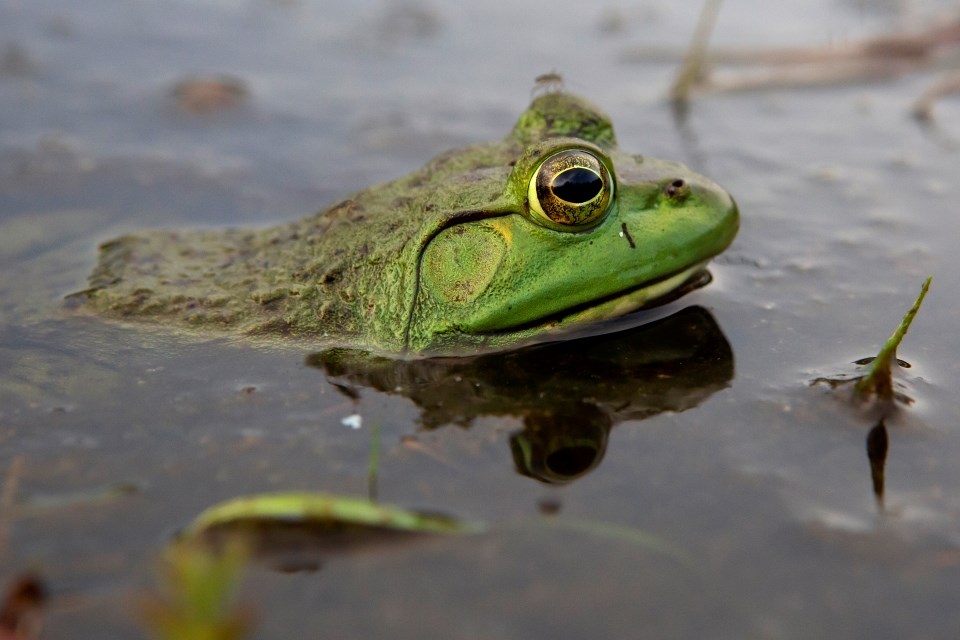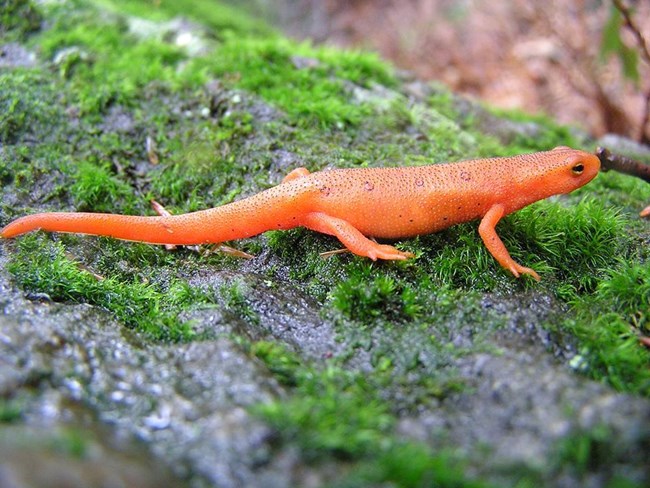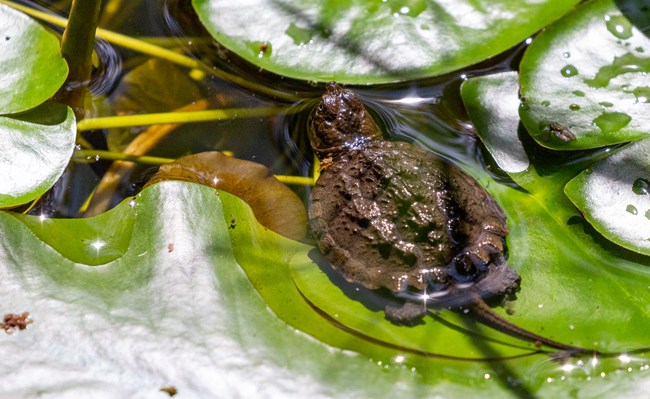AmphibiansMost people in New England associate the sound of spring peepers and American bullfrogs with the coming of springtime. These are two of approximately 11 amphibian species that live in Acadia's wetlands, streams, and ponds. We have one toad species, six species of frogs, and four salamander species. 
Will Greene, NPS, Friends of Acadia 
NPS Photo ReptilesAcadia only has seven known species of reptiles. This includes five snakes and two turtles. Fortunately for visitors, none of the snakes are venomous. Probably the most common and best known is the garter snake . These cold-blooded animals need to warm their bodies up in the sun, especially on cool mornings, so be courteous and don't disturb them. Other snakes found in Acadia are the smooth green snake, redbelly snake, ringneck snake and eastern milksnake. Eastern milksnakes are often mistaken for rattlesnakes because they practice mimicry. Eastern milksnakes will flick the tip of their tail in gravel or leaf litter to simulate the sound of a rattle. This behavior and their striking red and white colors help protect these snakes from a variety of predators and surprise many visitors in the park. 
Will Greene, NPS, Friends of Acadia NPSpecies ListsNPSpecies is a consolidated database where you can find the latest information on any species from any National Park Service unit. This resource lets you search for species information on specific parks and allows you to create your own itemized species lists. How Does it Work?Use the dropdown menus below to select the species category that you'd like to view. You can choose to get a checklist or to get the full list, which includes more information about each species. Once you make your selections, click on the view PDF button. This will generate your customized report. From here, you can click on the large Print button at the top of the document to print the report, or save the report by clicking on the blue-and-white floppy disk symbol to save the report. Select a Park:Select a Species Category (optional):
Search results will be displayed here.
Learn More |
Last updated: August 28, 2025
